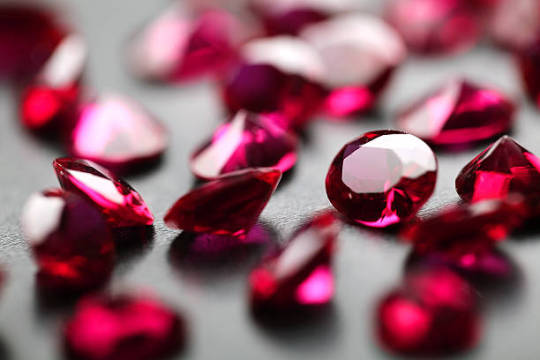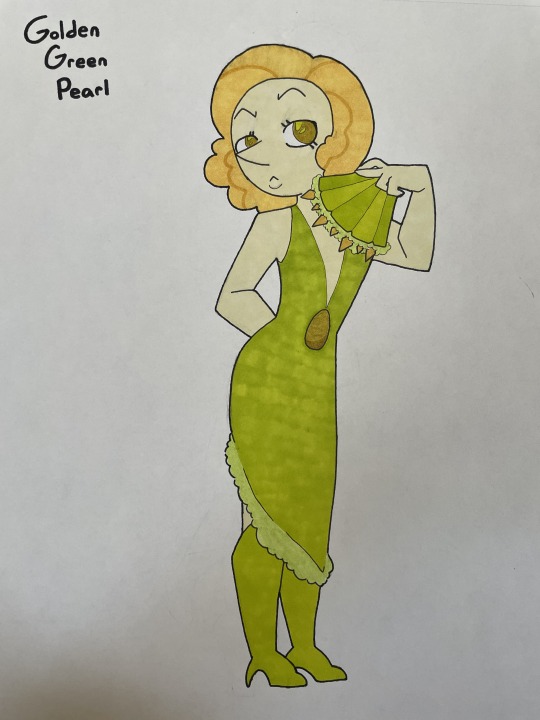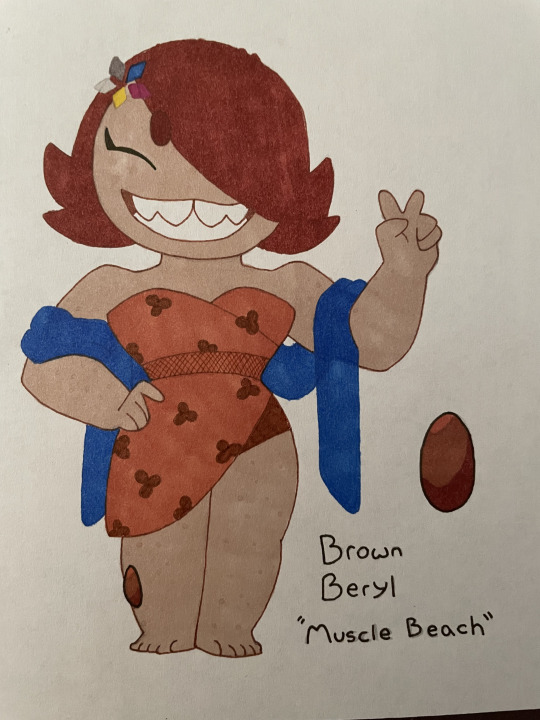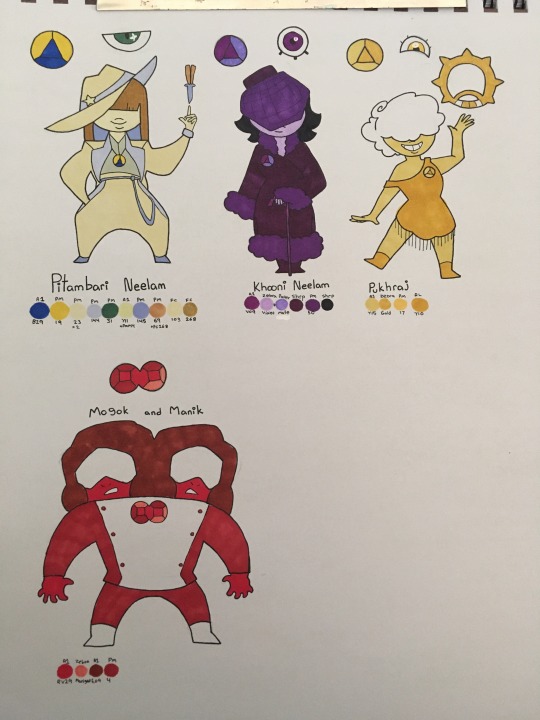#mogok and manik
Explore tagged Tumblr posts
Text

A quick redraw of some older gems from last year, and after this I’ll be on a Christmas Art Break! I’ll do a Christmas post of some art I’ve been saving up, but other than that, I’ll see y’all next year ;)
#My art#steven universe future#steven universe au#steven universe#sapphire#ruby#ruby twins#mogok#manik#mogok and manik#Pitambari#Neelam#pitambari neelam#Redraw#Yes Neelam is shirtless now#She don’t need no stinking shirt#Bare chest? Kind of?#Shirt but jacket#I don’t know what to tag her as#Zoom suit
3 notes
·
View notes
Text
Why Ruby is most preferred? Describe it and explain its main features.
Introduction to Ruby(Manik) Gemstones
Ruby is a pink to blood-red colored gemstone, a variety of the mineral corundum (aluminum oxide). Other varieties of gem-quality corundum are called sapphires. The red color is caused mainly by the presence of the element chromium. Its name comes from ruber, Latin for red. The variety of colorless, pale-yellow, or light-blue corundum is called sapphire; these are typically called "fancy sapphires."

Ruby is considered one of the four precious stones, together with sapphire, emerald, and diamond. Prices of rubies are primarily determined by color. The brightest and most valuable "red" called pigeon blood-red, commands a large premium over other rubies of similar quality. After color follows clarity: similar to diamonds, a clear stone will command a premium, but a ruby without any needle-like rutile inclusions may indicate that the stone has been treated. Cut and carat (weight) also determine the price.
The Mogok Valley in Upper Myanmar (Burma) was for centuries the world's main source for rubies. That region has produced some of the finest rubies ever mined, but in recent years very few rubies have been found there. Today, rubies are also mined in Thailand, Afghanistan, Sri Lanka, and Madagascar. They have also been found in North Carolina, in the United States.

The finest rubies have a rich, velvety color. They are extremely hard, but also brittle. Ruby is the traditional birthstone for July and is also the gem of the forty-first anniversary. The value of a ruby is determined by its color, cut, clarity, and carat weight. The most desirable ruby color is "pigeon blood red," which commands the highest prices.
What are the main things to keep in mind before buying Ruby Gemstone:–
Since ancient times, people have been fascinated by gemstones and their beauty. Throughout history, gemstones have been used for a variety of purposes, from adornment to currency. Today, gemstones are still highly prized for their beauty and durability.
Ruby has been treasured throughout history. It has been used in jewelry and other adornments for centuries. In some cultures, ruby is considered to be a symbol of love. It is also said to represent courage and strength.
Ruby is found in a variety of colors, from pale pink to deep red. The most prized rubies are those with a deep, rich red color. The color of a ruby is caused by the presence of chromium. The more chromium present, the deeper the red color.
In addition to its beauty, ruby is also prized for its durability. It is one of the hardest gemstones, second only to diamond. Ruby is an excellent choice for use in jewelry that will be worn often.
If you are interested in purchasing ruby gemstones, there are a few things to keep in mind. First, consider the color of the ruby. The most prized rubies are those with a deep, rich red color. The color of a ruby is caused by the presence of chromium. The more chromium present, the deeper the red color.
Second, consider the clarity of the ruby. Rubies can range from completely opaque to completely transparent. The most valuable rubies are those that are completely transparent.
Third, consider the size of the ruby. The larger the ruby, the more valuable it is.
Finally, consider the cut of the ruby. The cut of a ruby can affect its brilliance and fire. The most popular cuts for ruby are the oval cut and the round cut.
When purchasing ruby gemstones, it is important to work with a reputable dealer. Be sure to examine the ruby gemstones carefully. You can Buy Natural Ruby Gemstones at the best price from trusted Sources Vibrancys.com
0 notes
Link

The Ruby Stone
Ruby Stone is a precious and highly sought after red gemstone which ranges in color from pink to blood red. It is deemed to be among the most valuable gemstones on earth and is blessed with all the qualities that a precious gemstone should possess viz. spectacular color, outstanding hardness and durability, scintillating brilliance, and extreme rarity.
Ruby Stone is composed of the mineral aluminum oxide (Al2O3) which is popularly identified by the name of corundum. Trace amounts of metallic impurities (that of chromium) in the crystal structure of corundum gives the stunning red tint to this enchanting gemstone. Quite rightly called ‘Ratnaraj’ or the king of gems in Sanskrit, rubies are always conspicuous by their majesty.
Its color is its most basic and discernible property and the name ruby itself is derived from the Latin word ruber which means red. The red of the ruby is very significant as on one hand red epitomizes vigor, willpower, anger, and courage while on the other hand, it embodies joy, sexuality, passion, and love.
Gem quality corundum of any other color is called a sapphire.
The colors of a ruby include pinkish-red, purplish-red, orangish-red, and brownish red depending on the trace contents of chromium and iron in the stone. The amount and variety of trace minerals in a ruby differ with the geologic formation that produced it. For this reason, the region of origins such as Burmese and Thai is sometimes used to describe the color.
The Burmese stones have a propensity to be purplish-red in color while the Thai stones are far more brownish-red.
Rubies exhibit pleochroism which means that the color varies with the direction of viewing.
Almost all gems in the gem industry go through some sort of treatment or other for enhancement of clarity as well as the tone and saturation of color. Some stones are treated with oils while the corundum varieties of gemstones namely the rubies and sapphires are usually given heat treatment. Clarity and color of sapphires and rubies are enhanced significantly with heat treatment.
If you want a natural untreated ruby you should insist on a testimony from a recognized gem testing laboratory like the AGTA Gemological Testing Center attesting that the stone reveals no signs of heat alteration. But you have to pay a premium for the pleasure. Furthermore, basic heat treatment of rubies is an established practice in the gem industry so long as it is openly disclosed. The treatment does not radically lower the value of the gem.
Like a diamond, the value of a ruby is established by the four Cs, namely color, clarity, cut, and carat weight. Primarily, the true worth of a ruby is determined by its color. The most brilliant pigeon blood-red rubies command the highest value over the other rubies of comparable quality. Color is followed by clarity and a clear ruby will command a premium. But a wholly clear ruby without having any needle-like rutile inclusions makes it suspect. It might indicate that the stone has been treated or it might even be an artificial lab cultivated ruby. Cut and carat weight also influence the price of a ruby.
Often, the inclusions in a ruby (which diminishes its clarity) can in fact enhance its value. The silk, which is so common in corundum, can if sufficiently abundant, and precisely arranged, lead to asterism. With suitable cutting (only seen in cabochon cuts) this creates star rubies.
Rubies showing asterism are known as “Star Rubies”, and if transparent is highly prized. Normally star rubies exhibit six ray stars. But in unusual cases, twelve ray stars can also occur.
The plentiful tiny rutile needles in a star ruby are precisely set in such a way that they are aligned perpendicular to the rays of the star. These magnificent gems show a sharp six-rayed star which glides majestically across the surface of the gem as the light moves or the stone is rotated. The star is best visible when seen in a single light source such as sunlight.
A wide variety of shapes and cutting styles are used for crafting the raw ruby into a gemstone.
Oval cushion is the most prevalent cut but rounds are also seen along with other shapes, like the heart or emerald cut. Slight premiums are paid for round stones, while slight discounts apply for pears and marquises. Stones that are overly deep or shallow should normally be avoided.
Cabochon-cut rubies are also common. This cut is used for star stones, or those not clean enough to facet. The best cabochons are reasonably transparent, with smooth domes and good symmetry.
Normally rubies occur only in small carat sizes ranging from 1 carat to 15 carats. Fine rubies of large sizes are incredibly rare and cost a lot of money.
The overall grade is determined by looking at Hue, Tone, Color-Purity, Clarity, Transparency, and Cut.
Overall grade scores: Poor, Fair, Good, Very Good, Exceptional (Best).
Rubies have an excellent hardness of 9.0 on the Mohs scale of mineral hardness which means that only diamond and moissanite are harder than rubies. This makes it a fantastic jewelry stone. For reasonably clean stones, no particular wear or care precautions are necessary although a heavily included or fractured stone will be less stable.
There is something innately regal about rubies. The rich red color of this stunning gemstone has for centuries, besotted humans.
In ancient times rubies were considered even more precious than diamonds and till date, they remain one of the most sought after gemstones. Rubies have always remained the stone of choice for emperors and rulers all over the world. The immaculate ruby has been worn by almost every royalty.
Quite a few mystical metaphysical properties have also been attributed to rubies and these ideas have been handed over from generation to generation. The ruby is believed to impart clarity, wisdom, and motivation. Ruby was thought to safeguard the wearer from psychic and physical attacks. Soldiers in ancient Burma injected rubies into their skin that they believed would save them from fatal wounds on the battlefields.
Sleeping with ruby is believed to induce lucid dreaming.
The Romans & Greeks used rubies for their healing abilities. Warriors used rubies to heal their wounds and lessen the pain. It was believed that the healing power of rubies could minimize their suffering. It is also believed that rubies can promote healthy blood circulation and protect from infection. Rubies are thought to cleanse the blood of toxins.
Rubies are also said to stimulate fertility. A prevalent belief talks about rubies to be the drop of blood that comes right from the heart of Mother Earth.
The color red in itself evokes feelings that are strong and deep and rubies are a true reflection of this very fact. Symbolizing the very spirit of life and love, rubies make wonderful jewelry pieces. These radiant gemstones are especially considered as highly romantic gifts. Rubies make exquisite pieces of jewelry, like ruby rings, ruby earrings or ruby pendants. While more intricate pieces with diamonds thrown in make great accessories for special evenings, more understated ruby jewelry is ideally suited for everyday wear by adding a splash of color to any outfit.
Ruby Stone – Where and How It Is Found?
Ruby is a precious gemstone and is very popular and significant because of its rich red color. Everyone has heard of or seen it in a famous detective novel or a cartoon show or a thriller film. A favorite since the ancient most documented civilizations, Ruby stone is a prized possession and has been called the ‘King of Gems’. It is known as Manik in Hindi and has a very special place in Vedic Astrology. It represents the planet sun and is the birthstone (rashi ratna) for the sign Leo (Singh). Clear, large pieces of the stone are rarer and sometimes even more expensive than diamonds.
The characteristic Red Color of Ruby is because of the presence of the element ‘Chrome’ along with some other impurities. It is a strange paradox that Chrome is considered an impurity, yet this is what provides Ruby gemstone with its natural color. However, the problem is that chrome causes cracks and fissures within the natural gemstone. The quality of the natural Ruby gemstone is dependent upon the impurities present in the deposit and hence upon the origin of the natural Ruby gemstone.
Where is Ruby Stone found?
It is mined in many areas of the world like Southeast Asia, the Middle East, and some parts of Africa and Europe.
The most noted area in South East Asia where it is mined is the Mogok Valley of the Old Burma. This place has been the center of Ruby mining for centuries. The Mogok tract has provided the world some of its finest rubies and set a standard of classification in the world of gemstones.
Since 1990, Rubies have been extensively mined in Central Burma (Myanmar) area, especially the Mong Hsu area.
Another major supplier of fine quality Rubies is Thailand where it is also known as ‘Siamese Ruby’. Other parts of South East Asia where rubies are found are India, Pakistan, and Afghanistan, etc. Thailand is responsible for the major production or processing of Rubies. 80% of the rubies worldwide have gone through Thailand at some stage.
In Europe, these have been mined in Macedonia and Greenland. Some parts of Kenya in Africa have also been the suppliers for the gemstone.
Which is the Best Quality Ruby Stone?
It is only obvious that purchasing Ruby stones of higher quality will cost more. The price of Ruby stone is determined by keeping in mind these four factors – Clarity, Color, and Cut, Weight (in carat or Ratti).
Complete clarity in Ruby stone is almost close to impossible since natural ruby stone will always have natural inclusions. But, the greater the clarity, the greater will be the quality.
The most important factor while buying Ruby is its color. The best Rubies are ‘Pigeon’s blood’ colored, which are mainly found in Burmese mines. Burmese Ruby
stone has high clarity, blood-red color, and can be beautifully cut.
The second-best quality comes from Thailand. It has a dark reddish, almost brownish color.
Some parts of Sri Lanka supply pink-colored rubies.
If You’re Interested to Read More Benefits of Ruby Stone or You want to Buy Online Ruby Stone (Rings & Jewelries) Please Visit Hunza Bazar Online Shopping Store. Hunza Bazar sells all the traditional products of Hunza Valley, Gilgit Pakistan Like Hunza Dry Fruits, Hunza Handmade Products, Gilgit Salajeet, Gemstones, and Much More at very Cheap Prices with FREE Home Delivery.
Are You A Music Lover?
Are You Interested in Hindi Songs? Are You a Music Lover? Are you interested to download Latest Hindi Songs, Album Songs, Movie Albums, Singer Songs, Latest Punjabi Songs, Pakistani Songs, or Watch & Download Latest Bollywood Videos Songs in High Quality (HD) then Visit UnlimitedMusik.com & Enjoy latest Hindi Songs?
0 notes
Text
Rare And Renowned Ruby
One of the most precious gemstones, ruby attracts everyone. Its value lies in its crystal composition and the deep hues that glow within. The stone popular for love and prosperity has a history worth a read.
Natural ruby is one of the most precious and rare gemstones that attracts almost everyone. This fiery and captivating stone is a stone of nobility, considered the most magnificent of all gems. Ancients believed it surpassed all other precious stone in virtue and its value exceeded even that of the Diamond.
With its crimson hues, ruby is one of the few colored stones that can beat colourless diamonds in the value. Natural red ruby is mineral corundum coloured by presences of trace element chromium. An important and distinctive physical characteristic of ruby is its inner glow that makes the stone actually fluoresces.
Ruby has always been a talisman of passion, protection and prosperity. It symbolises the sun and its glowing hue suggests an inextinguishable flame within the stone that legends claim would shine through even the thickest clothing and could not be hidden.
Ruby was worn as an amulet to ward off plague and pestilence, warned it wearer of impending danger, kept the body safe and banished sad thoughts. It was a reputed charm to bring peace and help resolve disputes.
Ruby gemstone is also known as manik in Hindi, it has been a revered stone in Hinduism according to Vedic astrology. It is believed to be the gemstone of Sun, the king of the zodiac. Sun is the nurturer, the vital source of energy and the soul of the Kalpurusha.
Traditionally this stone was sourced from the Mogok valley and was meant to named “Burmese ruby” or “Burma ruby”. However, supplies dried up as far back in time as 1962, when the Mogok mines were completely dug up. Around the year 2000, new deposits were found near Mong Hsu in Burma but these rubies had a blueish/purplish hue to them. By using heat treatment this was corrected and the appearance was enhanced.
Today, the metaphysical properties of ruby are no less astounding. It actively stimulates the Base Chakra, increasing vitality and chi, the life-force energy, throughout the physical body and into the spirit. It promotes a clear mind, increased concentration and motivation to its wearer. Ruby has always been associated with love and is believed to initiate the sensual pleasures of love. It stirs the blood and stimulates the heart, which increases desire and sexual energy.
For this reason, rubies are considered to be the perfect wedding stones one can wear.
0 notes
Text









An art dump to hold everyone over while I work on a Project for y’all. Today’s is Gemsonas! We have a suspicious Pearl who knows waaaay to much; a brash Cancrinite that would definitely be friends with Bismuth and Amethyst in canon; a totally normal Magical Girl; Buff Girl Hour; a Gem requested by my mother that turned out nice; an Ametrine with some cyberpunk/spooky vibes; another totally normal Magical Girl, a bunch of mobsters; and a trio of Troublemakers!
I hope you enjoy, and I’ll put another art dump up tomorrow! Feel free to ask any questions if you’re curious!
#Gemsona#Gemsonas#Art dump#I’m working on a Project#Please be patient I’m almost done#Gold Pearl#Cancrinite#Mohawkite#Brown Beryl#Ammolite#Ametrine#Pitambari neelam sapphire#khooni neelam#Pukhraj#Mogok Ruby#Manik Ruby#Royal Lapis#White Star Sapphire#Boulder Opal#Steven universe#SU#steven universe future
21 notes
·
View notes